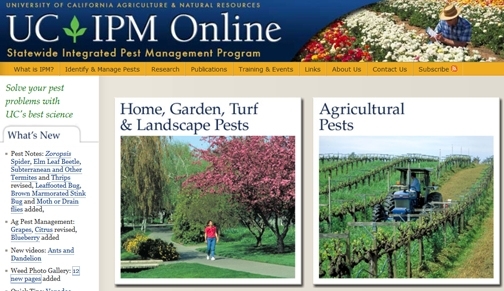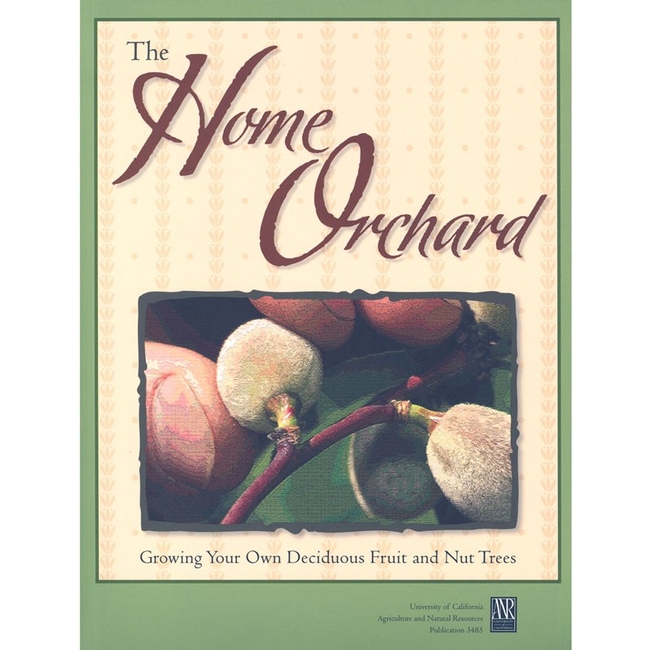By Susanne von Rosenberg, UC Master Gardener of Napa County
Fruit trees provide us with a bounty of fresh food and need only a little care. Four things are needed to keep your fruit trees healthy and productive: proper irrigation, fertilization, pest control and pruning.
Fruit tree pruning has two seasons: winter (dormant season) and summer. Dormant-season pruning guides young trees into the desired shape and invigorates trees. The hormonal effects of dormant-season pruning promote growth. Summer pruning controls growth.
Master Gardeners recommend keeping your fruit trees to a height that you can easily manage without a ladder. Keeping trees short makes them easier to care for and, of course, easier to harvest. Smaller trees also need less water, and you can fit more of them into the available space.
Pruning is a scary concept for many gardeners, but it's actually pretty hard to kill a fruit tree through pruning. It is important to prune at the right time, however. Early February is the right time for apples, pears and quince; for most stone-fruit trees (nectarines, peaches, plums); and for most other deciduous fruit trees such as figs, persimmons and pomegranates.
Prune citrus in the late spring and prune almonds, cherries and apricots in the driest part of summer. Wait to prune until the forecast predicts at least two days of dry weather so pruning cuts can dry a bit before it rains.
If you keep three principles in mind, pruning will be a lot less daunting. Look at the whole tree, start big and know your cuts.
Start by taking a good look at your tree from all sides. Are there any obviously unbalanced or overcrowded areas? That's where you'll want to focus. But first cut out any dead, diseased or crossing branches. Cut them all the way back to the next major branch or well below any signs of disease.
If you're not sure if a branch is dead, bend it to see how flexible it is. Live branches have some flexibility. Alternatively, scrape the bark gently with your fingernail. A live branch will have a little bit of green right under the bark.
Sterilize your pruners after every cut, especially if you have any diseased branches.
Next, remove any watersprouts, the vigorous, upright branches with few buds. Watersprouts will hardly ever yield fruit and should be cut back to the branch they grew from.
Now it's time for what most gardeners consider the most challenging part of pruning. It's time to cut out excess growth to maintain the overall shape of your tree, ensure that all branches get light, provide adequate air circulation and reduce last year's growth.
Start with the big cuts. Is there a large branch that needs to come out? If the tree grew a lot, there may be several tall branches that need to be shortened. Once you take the bold step of making the big cuts, you will be amazed how much better your tree looks. Starting with the big cuts will save you a lot of time.
Now look at the tree again. Is there too much growth on one side? This often happens if a tree gets a lot more sun on one side than the other. Are some branches getting too long or too tall? Are some branches completely shaded? They will eventually die if they don't get any light. You can safely remove up to a third of the total volume of the tree.
Finally, knowing your cuts will help you decide how much and where to cut a branch. There are two kinds of pruning cuts: heading and thinning. When you cut a branch back completely to the next bigger branch, that's a thinning cut. A heading cut takes off only part of a branch. The result is that the buds immediately below the cut will sprout.
Always make a heading cut close to a bud or buds so you don't leave stubs. When you make a heading cut, think about which direction you want the new branch to grow. Look where the closest bud is pointing, and that's likely the direction the new branch will grow. After every couple of cuts, walk around your tree again to see how it looks.
While there are many things to think about when pruning, the main thing is just to start. Pruning is something you learn by doing, and trees are forgiving. Keep the three principles in mind, grab your pruners and go. The Master Gardeners are cheering you on.
Free Talk: UC Master Gardeners will discuss “Growing Summer Vegetables” at the Napa Public Library on Thursday, March 7, from 7 p.m. to 8 p.m. Learn what you can grow in the summer, what to plant and when, and how to have a harvest all summer long. No registration required.
Workshop: The U. C. Master Gardeners of Napa County will present a workshop on “Growing Spring and Summer Vegetables” on Saturday, March 9, from 9:30 a.m. to 11:30 a.m., at the University of California Cooperative Extension, 1710 Soscol Avenue, Napa. Do you want nutritious, easy-to grow and utterly fresh food from your garden this spring and summer? Learn what the garden needs to successfully produce spring and summer vegetables from seeds and plant starts. In addition to growing basics and hands-on activities, this program includes watering, fertilizing and harvesting tips, with a dash of Integrated Pest Management for pest and disease control. The delight of growing your own groceries is matched only by savoring them at harvest. Online registration (credit card only); Mail-in/Walk-in registration (check only or drop off cash payment).
Workshop: The U. C. Master Gardeners of Napa County will present a workshop on “Summer Vegetables” on Sunday, March 10, from 1 p.m. to 3 p.m., at Yountville Community Center, 6516 Washington Street, Yountville. Get tips for growing your own summer vegetables. Learn some basics, get keys to success, and do hands-on activities to learn about new varieties and review old favorites. Enjoy healthy vegetables taken straight from your garden to your table. The delight of growing your own vegetables is matched by savoring them at harvest. Online registration or telephone the Parks & Recreation Department at 707-944-8712.
Master Gardeners are volunteers who help the University of California reach the gardening public with home gardening information. U. C. Master Gardeners of Napa County (http:/napamg.ucanr.edu) are available to answer gardening questions in person or by phone, Monday, Wednesday and Friday, 9 a.m. to Noon, at the U. C. Cooperative Extension office, 1710 Soscol Avenue, Suite 4, Napa, 707-253-4143, or from outside City of Napa toll-free at 877-279-3065. Or e-mail your garden questions by following the guidelines on our web site. Click on Napa, then on Have Garden Questions? Find us on Facebook under UC Master Gardeners of Napa County.
Attached Images:

